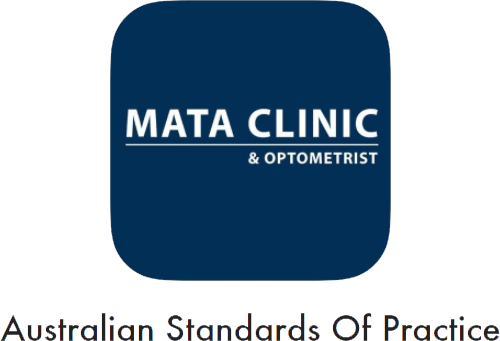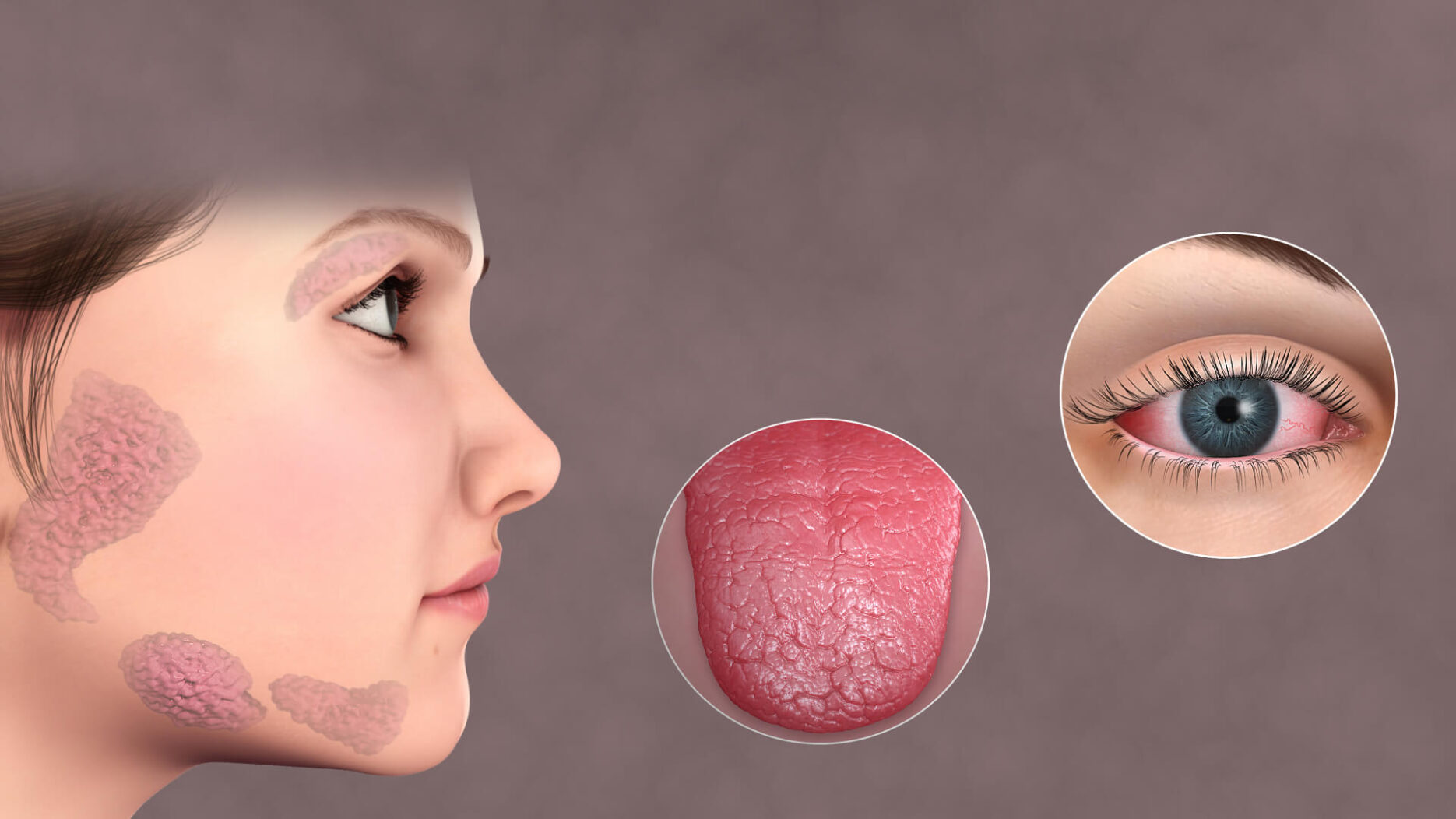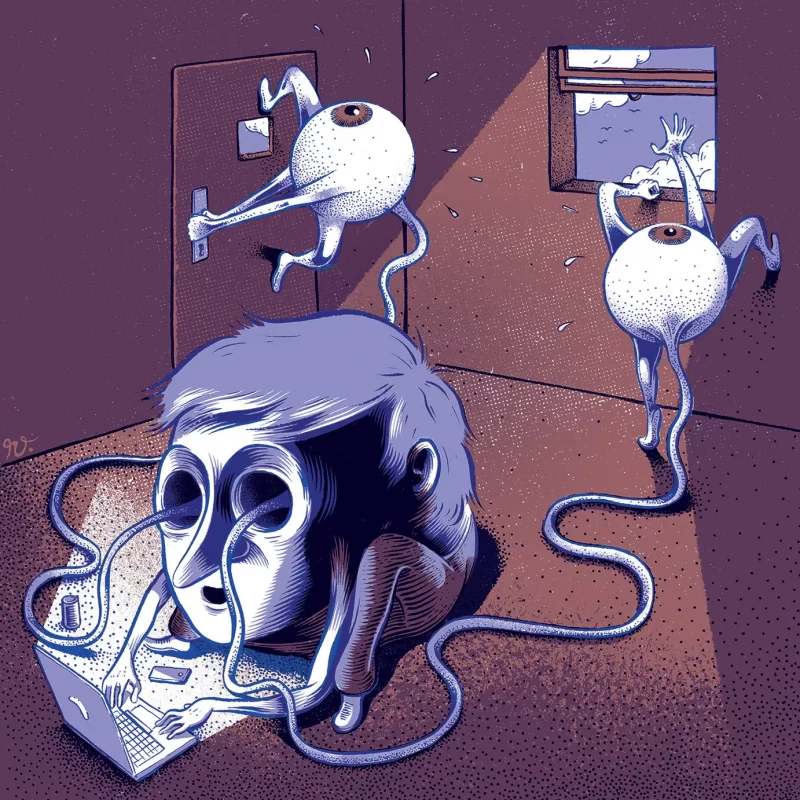Sjogren’s syndrome is a disease where the body immune system attacks the body’s own cells in tissues, starting from the mucous membrane and moisture-secretion glands of the eyes and the mouth. Those glands produce tears and saliva.
Symptoms
The most common symptoms are dry eyes and dry mouth. You may feel burning, itchiness or sandy sensation in the eyes. Dry mouth appears as a feeling of your mouth being stuffed with cotton, causing difficulty in speaking and swallowing. Sjogren’s syndrome also damages the nose, throat, joints, thyroid, kidneys, liver, lungs, skin and nerves. Thus, some people with Sjogren’s syndrome may experience one or more of the following symptoms: painful, swollen and stiff joint; swollen salivary glands between the jaw and the ear; dry skin; persistent dry cough, prolonged fatigue and vaginal dryness.
Risk factors
It is common for those people who have Sjogren’s syndrome to also have rheumatoid arthritis or lupus. Women and people at an age older than 40 have higher risk of developing Sjogren’s syndrome. The genetic factor also plays a role in the risk of developing Sjogren’s syndrome. Viral and bacteria infection act as a trigger of the action of the immune system. When the ocular environment changes and/or there is history of long-term topical medication use, the natural flora of eyes are disrupted which increase risk of infection.
Common complications
Sjogren’s syndrome dry eyes can caused blurred vision, sensitivity to light and damage to the cornea (the clear front outer layer of the eyes). The damage on cornea may cause scar formation, corneal ulcer and infection in severe dry eyes. Sjogren’s syndrome causes less saliva in the mouth. Saliva act as a first line defence against bacteria for the teeth. Thus, there is higher risk of tooth decay if your mouth is dry. Besides, there is higher risk to develop yeast infection in the mouth. It looks like cottage cheese on the tongue, which will cause mouth pain and redness.
Less common complications
Sjogren’s syndrome is a long-term inflammatory condition which can cause problems in lungs (bronchitis and pneumonia), problems in kidney function and problems in liver (hepatitis and cirrhosis). There might also be numbness, tingling and burning sensation in the hands and feet due to peripheral neuropathy. Cancer of the lymph nodes can occur but it is rare.
Diagnosis
The presence and onset of symptoms in the Symptoms section are reviewed for a pattern that worsen in outdoor and throughout the day. The personal history of arthritis or hypertension, the family history of rheumatois arthritis or lupus, and the recent medication history are reviewed.
- Reduced tear break-up time (low tear stability)
- Abnormally low Schirmer test with keratoconjunctivitis sicca (Rose Bengal or fluorescein staining) – Phenol red thread test acts as alternative of Schirmer test
- Decreased salivary gland flow
- Lab test for antinuclear antibody, rheumatoid factor or Sjogren’s syndrome specific antibodies
- Labial salivary gland biopsy shows infiltration of lymphocytes in salivary gland
Below is the list of the symptoms and corresponding treatment for Sjogren’s syndrome:
Dry eyes
Recently, Sjogren’s syndrome is found to cause changes in both aqueous tear production and meibomian gland function. Reduced meibomian gland repressibility and reduce tear film lipid layer is found. Sjogren’s syndrome can be associated with both aqueous tears deficiency and meibomian gland dysfunction so the treatment is not limited to either type of dry eyes. Treatment of Sjogren’s syndrome dry eyes aims to improve comfort. You should stop treatments that makes the problem worse and visit the eye care professional for advice.
- Dry eyes cause you to be more prone to allergies. If your eyes are itchy due to allergies, apply cold compress to the closed eyes to reduce the symptoms. Over-the-counter allergy eye drop applied twice daily may be useful if cold compress fails to resolve the symptoms.
- If your eyes feel burning and sandy, apply a warm compress over closed eyes using clean cloth heated in tolerably warm water from the sink or the shower, for 5 minutes at bedtime and upon awakening.
- During bath, the eyelid and eye lash should be carefully cleaned with diluted warm solution of baby shampoo. Application of facial cream should avoid the area around the eyes including the eyelids.
- Application of preservative-free artificial tears frequently and regularly, even when the eyes feel good, every 1 to 2 hours for 2 weeks, before reducing the frequency to check if the symptoms get worse. Artificial tears add moisture to the eyes and is likely to resolve blurred vision induced by dry eyes. If your vision is blurred with the use of artificial tears, try on a less viscous eye drop. Preservative-free artificial teras does not contain preservatives that irritate the eyes of people with dry eyes.
- As an alternative, try on the eye ointments or gel at bedtime by initially applying them to the eyelids and eyelashes, then apply in between lower eyelid and eyeball if the previous method is not helpful. Eye ointment and gels are more viscous and thicker so they will blur your vision and using them overnight is a better choice.
- You should avoid sitting in front of fan or air-conditioner to reduce the exposure of eyes to blowing air. You should also use humidifier to keep indoor air humid, especially in air-conditioned room. Wearing wraparound goggles in outdoor also keep the moisture around the eyes.
- If you are sensitive to light, wear sunglasses or FL-41 tinted lenses to reduce glare.
- You should have sufficient sleep and rest well every night to maintain the comfort in eyes.
Medications can be prescribed by doctor to decrease eye inflammation in moderate to severe dry eyes. For example, cyclosporine (Restasis) and lifitegrast (Xiidra). A minor surgery called punctal occlusion to seal the tear ducts that drain tears away from the eyes may relieve dry eyes because less tears is lost through drainage. Collagen or silicone plugs is inserted into the ducts to preserve the tears.
Dry mouth
People commonly drink water more frequently throughout the day to resolve dry mouth. Coffee and alcohol should be avoided to prevent worsening of dry mouth symptoms. Acidic drinks like colas and several sport drinks can harm the enamel of the teeth and lead to higher risk of tooth decay.
If you are a smoker, stop smoking can reduce irritation and dryness in mouth. Chewing sugarless gum or citrus-flavoured hard candies can stimulate saliva flow. Avoiding intake of sweet food between meals, proper brushing and flossing of teeth after every meal and daily antimicrobial mouthwashes should reduce risk of tooth decay.
Artificial saliva (sprays or lozenge) can be applied because it contains lubricant that helps the mouth to be moist for longer period of time. Medication prescribed by doctor such as the pilocarpine (Salagen) and cevimeline (Evoxac) can be used to increase the production of saliva. However, they cause side effects like sweating, abdominal pain, flushing and increased urination.
Dry nose
If you happen to have a dry and stuffy nose, a nasal saline spray is helpful to clear the nasal passages to allow easy nose breathing and to reduce mouth breathing that aggravates dry mouth.
Dry skin
You should not rub the skin but to pat the skin with wet towel and apply moisturise while the skin is still damp. Use of rubber gloves in dishwashing and house cleaning reduce dry skin.
Arthritis
If you are experiencing arthritis symptoms like joint pain, nonsteroidal anti-inflammatory drugs or other arthritis medication prescribed by doctor can be helpful.
Yeast infection
Antifungal medications prescribed by doctor can be used to treat yeast infection in the mouth.
Available treatment of Sjogren’s syndrome
Hydroxychloroquine (Plaquenil), the drug that is designed to treat malaria is often helpful in treatment of Sjogren’s syndrome. Immunosuppressive drug like methotrexate (Trexall) may be prescribed by doctor.
Prognosis
Most patients have good prognosis but complications may reduce the treatment outcome.
Conclusion
In short, Sjogren’s syndrome is a disease that affects many different parts of the body. The treatment should be based on the symptoms. For instance, fatigue, joint pain, dry eyes and dry mouth. The awareness of Sjogren’s syndrome is low. Most people think that drinking more water can reduce dryness in eyes and mouth. Some may use eye drop only when the eyes feel dry or use chewing gum to promote saliva production. You are advised to consult the eye care professionals or doctors for the suitable treatment option.





Recent Comments